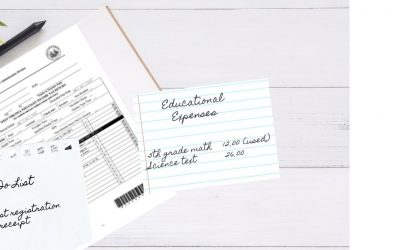A family’s decision to homeschool for whatever reasons takes much thought and consideration. As noted in Part 1, the first step is to investigate the requirements of the WV Homeschool Law. Then, as you lay some groundwork with regard to learning styles and training strategies, begin to set goals and priorities designed to meet your family’s needs.
STEP 4 – Read a Few Good Books
You can benefit tremendously by reading a few good books or blogs authored by other veteran home educators. These cover subjects such as encouragement in making the homeschooling decision, child training and strengthening relationships with your child, record keeping, what your child is expected to know at each grade level, and practical how-to books.
STEP 5 – Choose Your Curriculum
What is easy to begin with?
For the first year, some may find a package curriculum may be the best choice. Usually obtained from one company or source, this type of curriculum provides all the subjects for each grade, together with printed teaching guidelines, and prepared assignments. As confidence is gained, it is easy to add and replace curriculum by individual subject as you find things you like. cathyduffyreviews.com is an excellent resource to use when exploring your different curriculum options. She gives pros/cons of almost every available curriculum to help you make choices which fit your family.
How do I want my child to learn?
Learning is broadly achieved through two different channels: rote or memory and independent or guided exploration. While some curricula offer exposure to both approaches, there are those which specialize in just one. Carefully reading descriptions and/or reviews will help determine how the curriculum teaches.
What does my child need to learn?
There are several resources available to answer this question. . 1) Specialized books such as Robin Scarlata’s “What to Teach your Child When” series or What Every Child in __ Grade Needs to Know series by E.D. Hirsch, Jr. 2) Scope and Sequence materials from curriculum publishers. If you choose to purchase a package curriculum, the publisher has already done the work for you. 3) the WVDE has a core standards for each grade listed on their website.
Where do I get curriculum?
There are a variety of resources available for purchasing curriculum. An Internet search is a quick and easy way to find catalogs from the companies which interest you. Wholesale house distributors such as Christian Book Distributors offer a wide variety of curricula. Curriculum can also be obtained at the library. If you have decided what subjects/areas you want to cover for the year, it is an easy matter to use resources at the library. This would especially work well with science and history.
For more help see How Do I Choose Curriculum.
STEP 6 – Schedule and Plan
We offer some basic questions to help you develop your plan of action.
What books/how many chapters/lessons do you plan to cover per month?
When do you need special items such as library books, field trips, videos, etc., for projects and experiments?
How many or what days will you teach?
Examples: 9 month school year @ 180 days
4 days a week, 1 free for errands/housework
3 months school, 1 month off year-round
STEP 7 – Gather Supplies & Create a Home Learning Environment
Everything from pens and pencils to papers to maps to books! Organize in one area using cabinets, boxes, containers, shelves.
STEP 8 – Record-keeping
While not as essential in the earlier grades, some kind of structured record keeping becomes crucial in the high school years (see High School Recording Keeping), If you plan to use the portfolio option as your annual assessment then keeping the student’s work to show progress is essential. Maintaining clear, consistent records will help you evaluate what you’ve accomplished, where you’ve been, and what options to pursue. Records such as the following can prove helpful:
- Grades, or some system to assure mastery/progress of a subject/task/skill
- Books read
- Subjects/topics studied
- Extra-curricular activities/church responsibilities/community service, with awards or written assessments from leaders/instructors/facilitators
- Pictures or video of field trips, events, or projects
STEP 9 – Choose your method of annual assessment
Under West Virginia law, an annual assessment must be administered and submitted to your county school board by June 30th for grades 3, 5, 8, and 11 only.
The assessment can be accomplished through one of four different means.
1. Standardized Testing
2. Participate in the public school testing program
3. Portfolio
4. A form of evaluation agreed upon by the parent and county superintendent.
Following is a brief description of the standardized testing and portfolio options.
1. Standardized Testing
Standardized tests may be obtained through a state group such as CHEWV or through a party authorized by the test publisher. They must be administered by properly qualified individuals either at locally-formed test centers, private tester, or online. Costs include the price of the test, scoring and postage, plus any additional payment to a private tester or in the case of a testing center, a facility fee. Every test administrator must meet the qualifications established by the publisher of the test.
2. Participate in the Public School Testing Program
The public school testing program in West Virginia is currently a mastery-based test developed specifically for the state, rather than a nationally normed achievement test that gives national percentile rankings. This test is also given in only three grades over the course of a student’s school experience, which is problematic for homeschooling families who need to take an annual assessment. Therefore, CHEWV does not recommend this assessment option.
3. Portfolio Option
To have a clear record of your student’s progress portfolios should ideally be compiled throughout the school year. Samples of the student’s work in the subject areas of math, English, reading, science, and social studies are selected in order to clearly demonstrate the child’s progress during the course of the year. From the outset, the portfolio reviewer, who must be a certified teacher, should be consulted as to:
a. What he or she would like to see included in the portfolio
b. The cost to review the portfolio
c. The time needed to review the portfolio
d. Any preferred format
4. A Form of Evaluation agreed upon by the parent and county superintendent
This option would certainly require advance contact with the county superintendent, preferably at the beginning of the school year. Any agreed form of evaluation should be in writing, like a contract, so no misunderstandings can occur at the end of the year. Some counties have begun providing a list of acceptable tests. It is recommended to keep such a list in your files in case an issue arises about the choice of your test.
STEP 10 – Seek out support and encouragement
Finding like-minded people with whom to share questions, challenges, and progress can make all the difference in our willingness and even ability to stay the homeschooling course. Beyond the affirmation of a spouse and/or extended family, networking with other home educators at the local, state, and national level offers unique opportunities for friendship, fellowship, and information exchange.
Local Support Group
1. Regular contact with parents and families in your area
2. Personal sharing of experiences and creative ideas
3. Exposure to a greater variety of curriculum and other resources
4. Group activities, learning opportunities, positive social interaction
State Home Educators Organization
1. Essential to be kept informed of state legislative actions
2. Broader networking opportunities with focus on current issues
3. Events provided with practical helps and speakers
4. Power in numbers
Home School Legal Defense Association (HSLDA)
1. Inexpensive legal help concerning homeschool issues
2. Ministry to others who require legal help
3. Expertise of trained professionals who are diligent to guard our freedoms
(Note: After a contact has been made by a public school entity, it may be too late to join HSLDA.)
Teaching your children at home can seem like an overwhelming endeavor, but there are plenty of resources and support networks available to help you in embarking on this new adventure. We pray God greatly blesses your decision to educate your student at home.





Recent Comments